Laundry has been a part of everyday life since people started wearing textile clothes. Today, laundry hardly takes time to do, and there is hardly any need for physical effort to wash dirty clothes. However, this was not always the case.
In today's post, we look at how the process of washing clothes has developed over the years. Usually it involves washing clothes, drying and ironing them, but this post focuses mainly on the washing process. Here we will look at the different methods people around the world used to clean their clothes and to the different detergents and tools used in the process.
Without further ado, let's dive into the world of laundry.
The need to wash clothes
Before we discuss how people washed themselves in different historical periods, let's understand when and why people started washing clothes in the first place.
Humans first began wearing clothing some 200,000 years ago, but at that time their clothing was made of animal skin, fur, bones, and even leaves. They would probably throw them away when they started to rot. Over time, however, mankind learned to extract various fibers from plants and animals to make matter. These fabrics allowed them to make more durable clothing. And that was when the need to wash clothes also arose.

Making clothes was time consuming and the necessary materials were not always affordable for everyone. It was no longer possible to discard textiles when they were soaked with sweat, smelled bad and covered in dirt, grease or body lice. As such, mankind had to find a way to reuse their clothes and textiles. And then developed the concept of washing and laundry. Over time, the development of the concept of hygiene and improvements in innovation and technology, the process of washing continued.
Let's now look at the different ways laundry was done throughout history.
Wash clothes in antiquity
Civilizations throughout history can most often be seen developing near a water source. Water is needed for drinking, cooking, trade, transport and chores such as cleaning. Bodies of water such as rivers, lakes, ponds, oceans, etc. were places where people gathered and washed their clothes together. They acted as common areas to get washed.
In ancient times, clothes were washed by the rivers by pounding them against rocks and other abrasive surfaces, either by hand or by foot. Initially, the clothes were only washed with clean water, without the use of detergent. They were first soaked, then beaten and finally rinsed. The beating, knocking, twisting and slapping of the clothes on surfaces helped to shake the dirt off them.
Then, over time, people realized that the addition of specific substances to the water proved to be more effective for cleaning the substances. So, in addition to the punching and pounding techniques, they also added these newfound fabrics.
Since the old method of washing clothes often required people to wear heavy clothes with a lot of strength and power over long periods, it was the men who were assigned the task of washing clothes.
Most of these soaps were used exclusively to wash clothes and fibers. They were not used for personal hygiene.
Old detergents
Detergent is a product of our time. In ancient times, some of the most common cleaning products used were laundry, basic soap, lye, chamber lye and natural soaps.
Lye was made by boiling ash in water. It would create an alkali solution that would loosen the dirt that is stuck to the fibers.
Basic soap is made by heating animal fat or oil with lye and salt. The earliest historical evidence of the process of making soap comes from ancient Babylon. Archaeologists have found soap-like substances in clay cylinders dating back to around 2800 BC. The script found etched on the cylinders apparently translates to 'fat cooked with ash. Which is the basic recipe for making soap.
The term soap actually comes from an ancient Roman legend that contains a fictional Mount Sapo. According to legend, animals were sacrificed to the gods by burning them on top of Mount Sapo. When it rained, the water would wash down molten fat and ash down to the river below. In reality, women who washed their clothes on the Tiber River found that hitting their clothes on the ground and the rocks there would clean their clothes better. This place was apparently close to where the legendary Mount Sapo once existed.
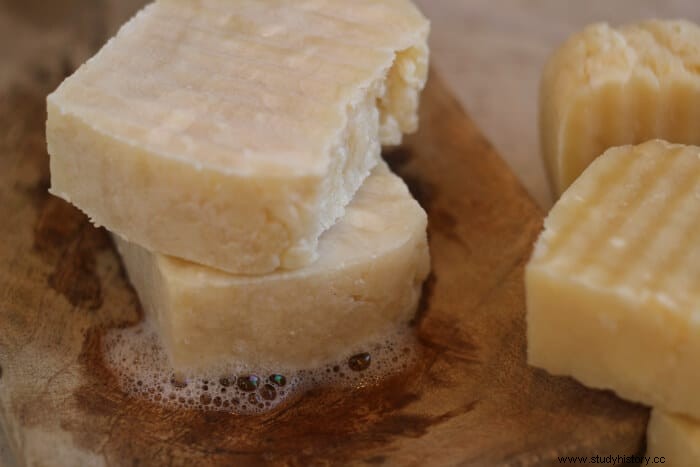
The other cleaning agent was the maid. This substance was discovered by the ancient Romans and served as a powerful stain remover. Chamber lye is just a fancy term for stale urine. Yes, you read that right. In Rome, urine was collected from the chamber pots in the public toilets, then left out for a few days for fermentation. Concentrated urine contains high levels of ammonia, which was the chemical that helped remove tough stains. This method was used, mainly in the Western world until the 19th century.
Laundry in Ancient Civilizations
Ancient Egyptian hieroglyphs serve as proof that the ancient Egyptians used to wash their clothes by repeatedly trampling on them with their feet. They even had special bats to beat the clothes and special stones that were reserved for washing clothes. Like other civilizations, they also used a version of ancient soap, as archaeologists have found soap-like substances from Egyptian laundries dating back to 2000 BC. But they also used lye and salts as baking soda, which was also used for the mummification process.
Ancient Rome is another civilization that often comes up when discussing the history of laundry, as the concept of offering laundry to the public comes from there.
The ancient Romans wore woolen clothes when their daily attire was when wool was the most available material. The heavy materials in the warm Mediterranean climate would produce a lot of sweat and body odor, so the clothes had to be washed often.
Men known as fullones were responsible for washing clothes for the Roman population. Chamber lye was an optional detergent in ancient Rome. To wash, the fullones would first soap the clothes with chamber liquor and water, then pounded and trampled on them, twisted them out and then finally rinsed with clean water.
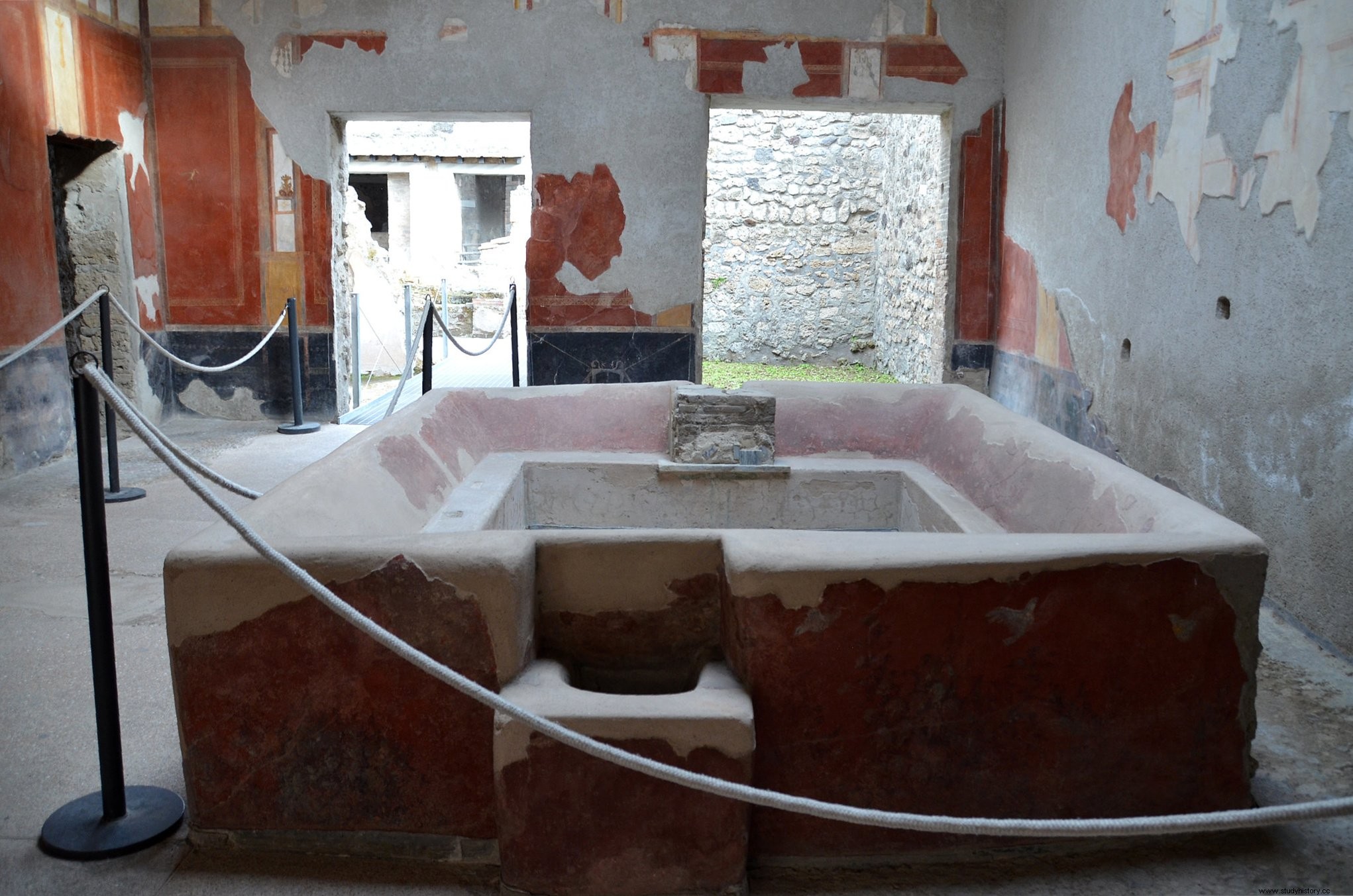
Fullones were professionals at the time, but in cultures that did not have laundry, people had to wash themselves. Being a painstaking process, proper laundry was only done a couple of times each year. Although underwear and everyday clothes were often washed by simply washing them in warm water.
In Eastern civilizations such as the Chinese he dynasty, which lasted from 206 BC. to 220 BC, fabrics such as silk, which were very delicate, were washed with the pulp.
Middle Ages
After the fall of the Roman Empire, fullones no longer retained their fame, and most washed themselves. It was also in this era that women took over the role of washing clothes. During this period, many places in Europe saw the emergence of washrooms or communal washing facilities. Alternatively, they washed the clothes by the river as in ancient times.
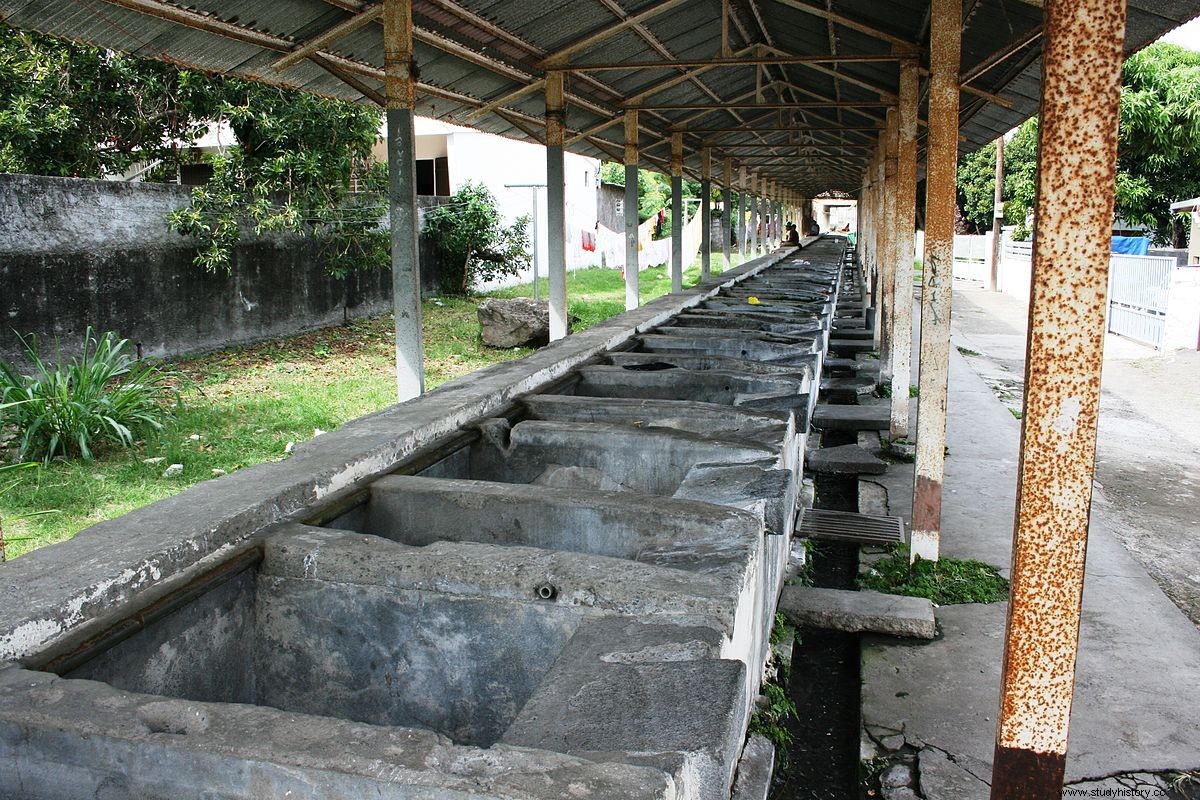
During this time, people also began to learn about the benefits of using hot water to wash clothes. Some cultures, such as the ancient Egyptians, had already known about washing with boiling water before the Middle Ages, but during this period the knowledge became more common. They found that boiling water was particularly effective in removing fat
During the Middle Ages, the process of making soap was developed as vegetable oil-based soaps made instead of animal fats. These soaps were less harsh and had a pleasant odor. The Aleppo soap imported to Europe from Syria, for example, was made from olive oil and perfumed with bay oil. In the 7th century, countries such as France, Italy and Spain began to produce these soaps as they had plenty of olive oil.
The soap production process advanced, and they were branded as luxury products due to their popularity among the upper class. So common people had to resort to using urine and lye as detergent.
Cleanliness was apparently reserved for the wealthy. Yet, contrary to popular belief, people in the Middle Ages washed their clothes. Only the very pious people did not wash themselves or their clothes. Devoted medieval Christians believed that washing was a sign of overindulgence in itself. And some saints believed that suffering from refraining from being pure caused suffering and therefore showed their devotion to God through their suffering.
Early modern times
The early modern era, which refers to the period between the 15th and 18th centuries, was a revolutionary period for laundry. This era discovered tools specifically designed to catalyze the washing process.
In this era, the richer families would hire a laundromat while the poorer population would continue to wash their own clothes.
Washing clothes in rivers was still a common practice, at least in the first decades of this period. What was new now was that women were to carry tools such as washing flags made of wood called beetles. These were used to strike the clothes against a surface, as before, only with more force to agitate dirt and grease. For best results, women would soak their clothes in detergent beforehand.
New detergents

Types of detergents did not change, but some additions were made to the list. Natural soaps became more popular during this time. For example, soapwort, a plant that originally grew in northern Europe, was introduced to England by monks and in the late 16th century, it was widely used as a detergent. The leaves of soapwort were crushed to produce a substance that would foam like soap. It is especially useful for washing delicate fabrics.
Another plant that was used was oregano. It was used during the rinsing process to add a beautiful perfume to the freshly washed clothes.
New laundry methods
New laundry methods were also developed in this era. A process called bucking was developed to maintain white clothing. Colored clothing was not as common as it is today, so it was crucial to maintain white fabrics. Bucking was done by soaking the dirty clothes in either hot or cold lye. Alternatively, ash and urine were used. These will remove tough and visible stains from white clothes.
Clothes were also bleached to lighten the clothes by using lemon juice on the stains. Once the clothes were washed, they let them dry under the bright sun on the grass. This grass was specially cut for drying and the patch was named dry green.
New tools
Over time, people began to move to urban areas from rural areas, which means that rivers and larger bodies of water were not easily accessible for washing clothes. In the 17th and 18th centuries, equipment such as bathtubs, wooden bowls and bathtubs had become useful for holding large amounts of water and washing them. Long wooden sticks with conical ends called dollies were used to pound the clothes inside the bucket. Later, the conical piston-like ends were replaced with pins so that the clothes could be beaten and tumbled.
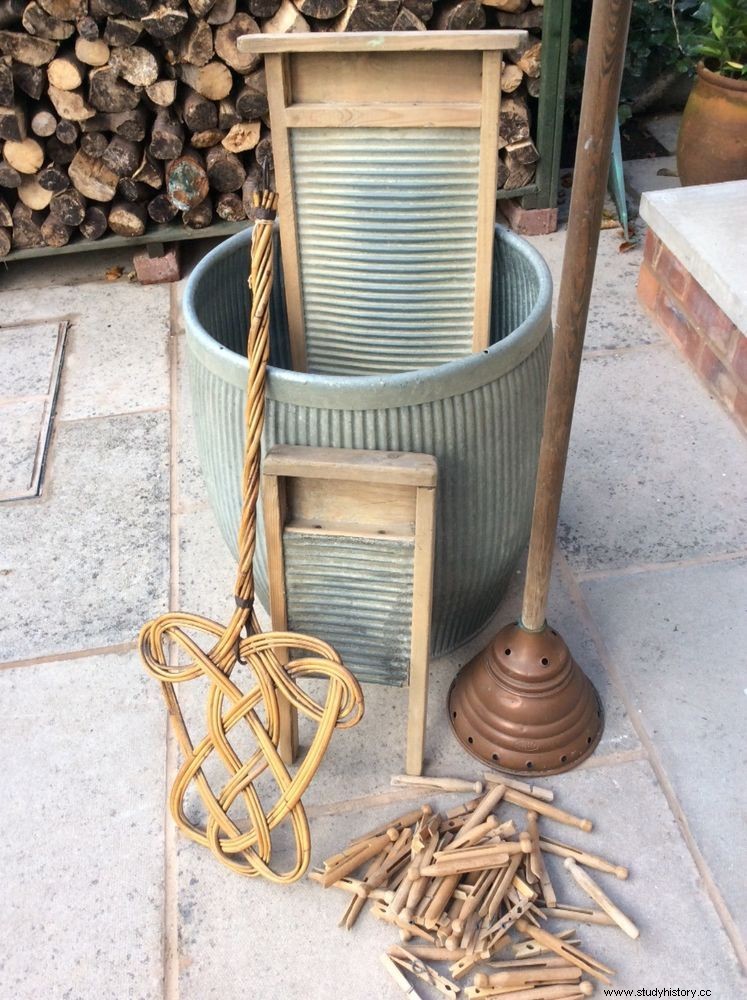
Another ingenious invention was the washboard. Some sources believe they were an invention of the Scandinavian countries, as they were the ones who originally made the backs of wood, but there is not enough evidence to prove this. There is evidence that the tool was patented in 1797 by James King, an American inventor. A washboard is a flat tool with backs on one surface where the cloth foam in soap can be rubbed to clean dirt.
Modern times for today
With the advent of the industrial revolution, there were many inventions and experiments made before the design of the modern washing machine. While the washing machine was on its way. Women continued to use bathtubs and washboards.
Washboards have become even more popular in this era, and they have even undergone some changes. What was originally made only of wood, was now made of zinc, steel, baked clay, stone and even glass.
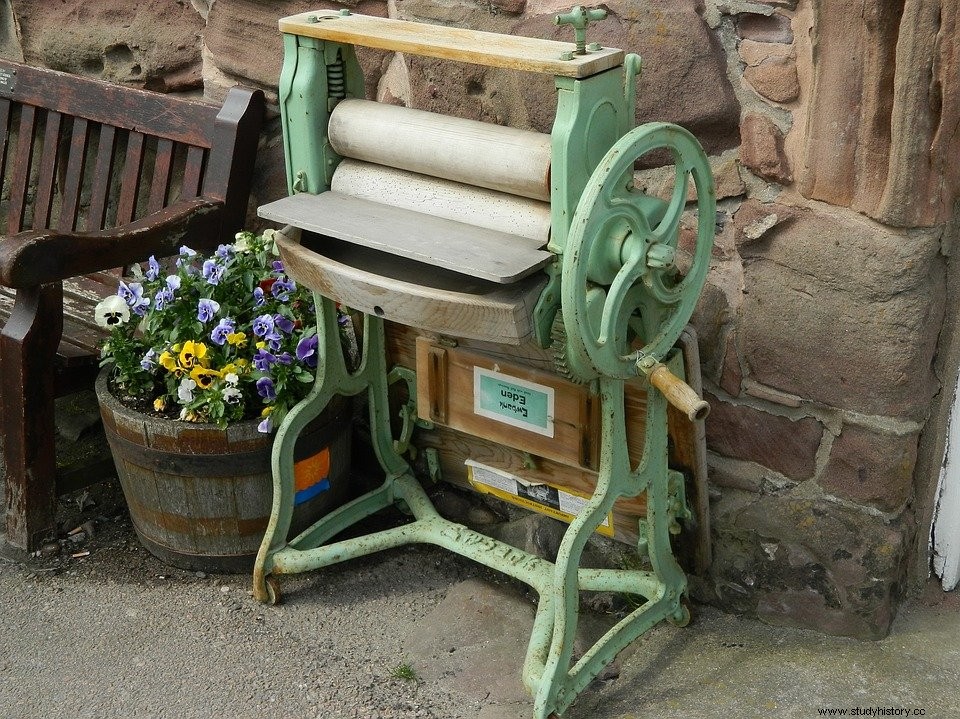
The first mechanical invention in the laundry world was the defect. One shortcoming was a manually operated machine that used two rollers to squeeze out excess water. The clothes were passed between the rollers and they would come out on the other side, ready to be hung up for drying. Before this, it can take several days to dry laundry. Therefore, most laundries were washed on Mondays, so they would be ready to iron their clothes by the end of the week. In the 18th century, many of the wealthier families wanted to own this machine.
Innovations in the world of laundry
In the 18th century, the search for designing the first washing machine began as well. The goal was to reduce the manual effort, time and resources required to wash clothes.
The first person to whom the credit was given to invent the washing machine is a German scientist named Jacob Christian Schaffer, who designed his model in 1767. Shortly afterwards, attempts to improve the washing machine were made by H. Sidgier, an inventor from Great Britain, in 1782. The design consists of a wooden cage and a handle. Inspired by this design, other companies with their ideas and designs help to produce various mechanized tools to facilitate the washing process. Then, in 1851, James King invented the rotating drum and, in 1858, Hamilton-Smith invented a rotating drum with a reversal. However, these designs could not be used in real life, yet. The first functional washing machine was made in the late 19th century. However, this machine turned out to damage the clothes when it loaded the fabric too much and pressed it.
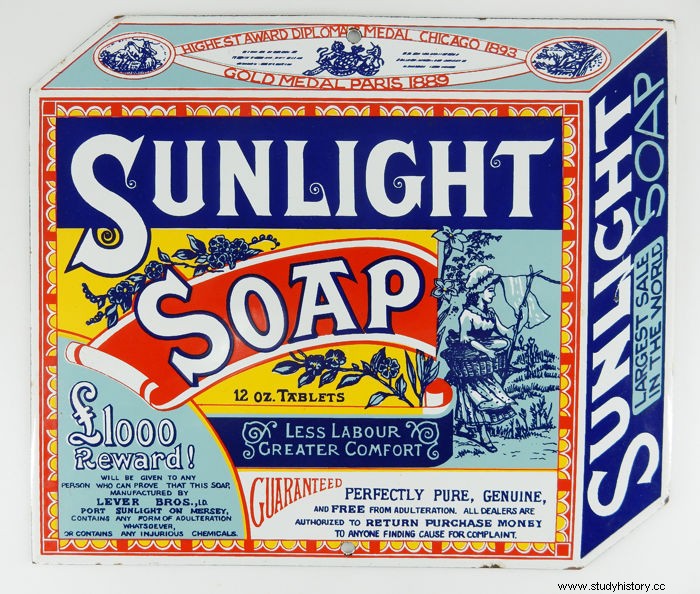
Also in the 19th century, chlorine, bleach and detergents and detergent sticks were developed. Overall, the improvements in chemistry and the soap process were improved, and they produced detergents that were stronger and more effective. This meant that the clothes no longer needed to be aroused as much as they used to be. Just swirling them a few times would remove dirt and grime.
Early washing machines
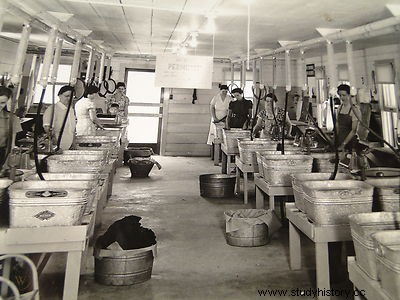
Washing machines developed during the 19th century were made of wood, had washers, handles, hinges, gears, levers and knives to make a simple machine. They wanted a tub for the base, rotating drums and a handle for turning a rod. Made by setting up the inventions of the said inventors previously. Machines were originally used in businesses that offer laundry services, hospitals and eventually the homes of the wealthy. Offering laundry services became common as the late 19th century saw an increase in the number of women in work. Which meant that women could no longer spend time on housework such as laundry. An increasing population in the middle class and an increase in the number of clothes found in the cloakroom were also observed. All these factors together gave rise to a demand for laundry services.
Modern washing machines
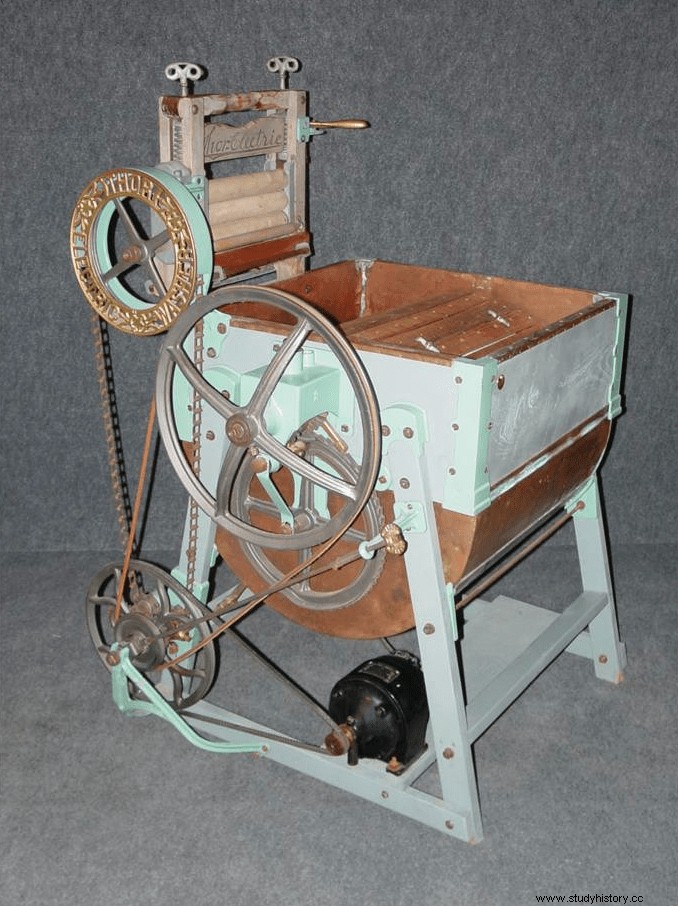
The first electric machine and the closest one that resembled the modern washing machine came out between 1904 and 1906. Washing machines along with detergents were heavily promoted by large companies.
In the middle of the 20th century, laundries, which offered automatic laundry services, became widespread. At present, washing machines have become affordable enough for almost every household to own one. Today's washing machines and laundry systems are advanced to be able to control the temperature of the water, stirring and speed. These features are constantly improving over time with technological advances.
The importance of washing

As we have seen, washing clothes and laundry has been part of our daily routine since ancient times. Washing clothes is inevitable, at least as long as humanity wears clothes. Through education we learn the importance of washing clothes often. After all, we will not come in contact with harmful bacteria and other microbes that can cause infections. And we also do not want mites, dirt and body lice.
In this post, we learned not only the story of washing, but also a little about the history of soap and detergent. We also learned about the perception and standard of hygiene that many civilizations and time periods maintained. And we learned about the wonders of human ingenuity.
Do not hesitate to share your thoughts in the comments below. Click here for more articles like this.
